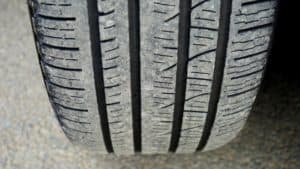Commercial Tire Blowouts: Tips for Drivers
In the United States, tire blowouts cause the most crashes on busy highways. According to the National Highway Traffic Safety Administration, they impact over 11,000 truck drivers. Novice and rookie drivers can help change this statistic if they learn the top reasons why their tires blow out.
Why Tire Blowouts Are Dangerous
A commercial truck driving training course doesn’t effectively prepare a driver for a blowout. The problem is that certain situations can limit a driver’s ability to successfully maintain control of a truck immediately after a tire blows out. From a performance standpoint, the biggest risk following a blowout is instability. Without stability, even a seasoned truck driver can very easily lose the ability to steer a truck in the proper direction. As a result, prevention is the best defense for a truck driver.
Poor Maintenance
If a tire doesn’t receive proper maintenance, it will slowly degrade. In terms of basic tire maintenance, the most important thing that a truck driver must check is the air pressure. If too much air is in a tire, the treads will break down faster. An under-inflated tire causes a totally different problem. If there isn’t enough air in a tire, wear and tear will develop quicker along its sidewalls. Balance is the key, and a truck driver can find it by testing every tire regularly with a pressure gauge.
Overloaded Trailer
The weight of a trailer can put a lot of pressure on every tire. If too much pressure weighs a tire down, it will fail or blow out. This is why a truck driver should always ensure that all tires are properly inflated before loading a trailer. Also, a driver should never surpass a trailer’s maximum weight capacity, as this can also trigger a blowout.
Hazards on the Road
Truck drivers must drive strategically on highways in order to protect their tires’ integrity. The most dangerous hazard on a highway for a commercial driver is a pothole. If a truck drops into a very deep pothole, the intense impact could slice the rubber on a tire.
Tire Leaks
The most dangerous source of a blowout is a slow leak. This type of leak is tough to detect because it weakens a tire’s core very gradually. The easiest way to catch a slow leak early is by conducting a brief tire inspection before every trip.
Speeding
When a truck driver speeds, every tire wears down faster. Many tire manufacturers understand this, which is why they use unique components during the manufacturing process to give their products a speed restriction. Typically, if an 18-wheeler travels faster than 75 miles per hour, its tires will begin to break down.
Defective Tire

Defects are usually discovered by a manufacturer or a consumer. If a large group reports that a product is defective, the manufacturing company will issue a recall. The most common type of defect relates to a tire’s sidewall. A tire is labeled as defective if the sidewalls aren’t melded correctly to its steel belt or its tread.
Because the trucking industry is fast-paced, a typical driver may not know when a tire manufacturer has issued a recall. However, if a manufacturer fails to recall a product, anyone who has been affected by this action may be able to file a claim for injuries while working with a trucking accident lawyer.
Heat
A tire can tear if it gets too hot. In the trucking world, the biggest threat to other drivers is increased friction. Typically, friction builds up underneath a truck’s tire during:
- Fast-pace driving maneuvers
- Sharp turns while cornering
- Constant braking situations
The risks intensify whenever temperatures are high on a summer day. If there is a heatwave in a community, a tire may heat up far beyond its maximum limit, and this always triggers a blowout.
A truck driver can prevent a blowout during a heatwave by slowing down on long highways. If a driver wants peace of mind, they could fill each tire with nitrogen. This gas is much cooler than oxygen, so it works well inside of a tire during a heatwave.
However, the best defense is a great offense. This means that it’s best to equip a large truck with tires that are designed for extreme conditions. Although there are many rubber compounds for truck tires, some varieties don’t handle high heat well.
When truck drivers shop for tires, they must consider the ratings. Every tire has a temperature rating for its speed, load capability, and tread wear. The grades are structured from most effective to least effective. A grade-A tire is a great product because it runs cool on hot pavements, and a grade-B tire is an average product. Grade-C tires are the least effective; however, they’re still very safe.
Weight Problem
When tire manufacturers manufacture a group of tires, the crews must ensure that every wheel has accurate measurements. If the measurements for a set of tires are incorrect, a vehicle will lack balance, which is a problem because an unbalanced base can cause a blowout. In the trucking industry, weight distribution matters. If one tire supports more weight than the other tires, it will blow out.
A commercial driver can maintain stability on the road by only equipping tires that are part of a set. If you have to trail a truck that’s running on a tire spare, it’s best to travel from a safe distance.
A set of brand new professional-grade truck tires can also lose their balance. If you understand the signs, you’ll have an opportunity to avoid an accident that could result from a blowout.
Unbalanced Tire Signs
Tire grip influences tire balance on the road. When the treads on a tire have worn away, the tire loses its ability to grip the road correctly. On wet roads, the lack of grip can cause hydroplaning, which can lead to a blowout.
An unbalanced tire always has key characteristics that don’t mirror the other tires. If you ever spot a tire that’s under-inflated, over-inflated, or cracked, it’s not balanced.
What Happens During a Blowout
Immediately after a tire blows out, a truck driver shouldn’t spin the steering wheel, release the gas pedal, or apply the brakes. If a driver takes any action, they may lose control of the truck.
Instead, a driver must try to steer the truck straight on the road. During this process, the vehicle will try to drift to one side. To prevent this from happening, the driver must stay calm while aligning their hands on the steering wheel in the 10 and two position. The truck will start to wobble a bit. However, the driver shouldn’t try to turn the steering wheel because the rotation could trigger a spinout.
Once the driver has regained control of the truck, they can slowly take their foot off of the gas pedal so that the engine can slow down on its own. After the truck’s speed is below 30 miles per hour, it’s safe to apply the brakes.
A lot can happen during and after a blowout. If you ever need a trucking accident lawyer, contact Rebenack Aronow & Mascolo, L.L.P- RAM Law at (732) 394-1549. We serve locals in New Jersey and the surrounding areas.


